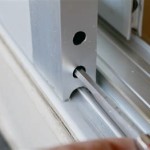Decking Over Patio Slabs: A Comprehensive Guide
Decking over existing patio slabs presents a viable option for homeowners who desire a more visually appealing and comfortable outdoor space without the hassle and expense of completely removing the existing hardscape. This approach can transform a tired, cracked, or simply uninspiring patio into a stylish and functional deck. The project requires careful planning, appropriate material selection, and sound construction techniques to ensure a durable and aesthetically pleasing result. This article explores the key considerations involved in decking over patio slabs, providing a comprehensive overview of the process.
Assessing the Existing Patio
Before commencing any decking project, a thorough assessment of the existing patio slabs is paramount. This evaluation will determine the suitability of the patio as a foundation for the new deck and highlight any potential challenges that need to be addressed. Several factors must be considered during this phase.
The first and most crucial aspect is the structural integrity of the patio slabs. Inspect each slab for cracks, chips, and signs of settling or movement. Minor cracks might be acceptable if they are stable and do not pose a significant structural risk. However, large cracks, crumbling edges, or evidence of significant shifting indicate underlying problems that must be rectified before proceeding. Replacing damaged or unstable slabs is essential to create a solid base for the deck.
Next, evaluate the drainage around the patio area. Proper drainage is crucial to prevent water from pooling underneath the decking, which can lead to rot, mold growth, and structural damage. Ensure that the patio has a slight slope away from the house to facilitate water runoff. If the patio is relatively level, consider incorporating a drainage system into the decking structure. This might involve installing drainage matting between the slabs and the decking or creating gaps between the decking boards to allow water to escape.
The stability and evenness of the patio surface are also critical. Uneven slabs can create an unstable and potentially hazardous decking surface. Use a level to check for variations in height across the patio. Minor differences can often be accommodated during the decking installation process using shims or adjustable pedestals. However, significant height discrepancies may require leveling the patio with a self-leveling compound or, in extreme cases, removing and re-laying the affected slabs.
Finally, consider the overall size and shape of the patio. These factors will influence the design and layout of the decking. Take accurate measurements of the patio to determine the amount of materials needed and to plan the placement of support structures and decking boards. Consider how the decking will integrate with the surrounding landscape and any existing features, such as steps, walls, or garden beds.
Choosing the Right Materials
Selecting the appropriate materials is crucial for the longevity, aesthetics, and safety of the deck. The choice of materials will depend on factors such as budget, desired appearance, maintenance requirements, and environmental considerations. The substructure and decking boards are the two primary material considerations.
The substructure provides the framework that supports the decking boards. Traditionally, treated lumber has been the standard choice for substructures due to its resistance to decay and insect infestation. Pressure-treated lumber is particularly suitable for outdoor applications, as it is treated with chemicals that protect it from the elements. However, it is essential to select lumber that is specifically treated for ground contact if the substructure will be in direct contact with the patio slabs. Another option is to use composite materials for the substructure. Composite substructures offer several advantages over wood, including superior resistance to moisture, rot, and insects. They are also typically more dimensionally stable, meaning they are less likely to warp or crack over time. While composite substructures may be more expensive upfront, they can offer long-term cost savings due to their durability and low maintenance requirements.
The decking boards are the visible surface of the deck and contribute significantly to its overall appearance. Wood decking is a classic choice that offers a natural and warm aesthetic. Popular wood decking options include cedar, redwood, and pressure-treated pine. Cedar and redwood are naturally resistant to decay and insects, making them durable choices for outdoor use. Pressure-treated pine is a more affordable option, but it requires regular maintenance to protect it from the elements. Composite decking is an increasingly popular alternative to wood. Composite decking is made from a blend of wood fibers and recycled plastic, offering a durable and low-maintenance decking surface. It is resistant to rot, insects, and fading, and it comes in a wide range of colors and textures. Composite decking can be more expensive than wood decking, but its long lifespan and minimal maintenance requirements can make it a cost-effective choice in the long run. PVC decking is another synthetic option that offers excellent durability and resistance to moisture and insects. PVC decking is made entirely from plastic, making it impervious to water damage. It is also lightweight and easy to install. However, PVC decking can be more expensive than composite decking and may not have the same natural appearance as wood.
In addition to the substructure and decking boards, consider the fasteners, hardware, and finishing products needed for the project. Use corrosion-resistant screws and nails to prevent rust and ensure the deck's structural integrity. Choose hardware that is compatible with the decking materials being used. Apply a sealant or stain to protect wood decking from the elements and enhance its appearance. Use appropriate safety gear, such as gloves, safety glasses, and a dust mask, when working with lumber and composite materials.
Constructing the Decking Frame
The construction of the decking frame is a critical step that determines the stability and longevity of the entire structure. A well-built frame provides a solid foundation for the decking boards and ensures that the deck remains level and secure over time. This process involves several key steps.
Firstly, establish a perimeter frame around the patio using treated lumber or composite materials. The perimeter frame should be slightly smaller than the patio area to allow for drainage and ventilation. Secure the frame to the patio slabs using concrete anchors or construction adhesive. Ensure that the frame is level and square before proceeding.
Next, install joists within the perimeter frame to provide support for the decking boards. The spacing between the joists will depend on the thickness and strength of the decking boards being used. Generally, joists should be spaced 12 to 16 inches apart for optimal support. Secure the joists to the perimeter frame using screws or nails. Ensure that the joists are level and evenly spaced. Consider using adjustable pedestals beneath the joists for added support and to compensate for any unevenness in the patio slabs. Adjustable pedestals allow for precise leveling and can help to create a perfectly flat decking surface.
If the patio is large, it may be necessary to install additional support posts beneath the frame. The support posts should be made from treated lumber or concrete and should be spaced evenly across the patio area. Secure the support posts to the patio slabs using concrete anchors. Ensure that the support posts are level and plumb before proceeding. The support posts will help to distribute the weight of the deck and prevent it from sagging or settling over time.
Before installing the decking boards, consider installing a layer of drainage matting between the frame and the patio slabs. Drainage matting helps to channel water away from the decking and prevent it from pooling underneath the structure. This can help to reduce the risk of rot, mold growth, and structural damage. Cut the drainage matting to fit the patio area and secure it to the frame using staples or adhesive. Overlap the edges of the matting to ensure complete coverage.
Once the frame is complete, begin installing the decking boards. Start by laying out the boards to determine the best layout and minimize waste. Consider the direction of the boards and how they will align with the surrounding landscape. Cut the boards to the desired length and secure them to the joists using screws or hidden fasteners. Ensure that the boards are evenly spaced and aligned. Leave small gaps between the boards to allow for expansion and contraction. Use a spacer to maintain consistent gaps between the boards.
Finally, trim the edges of the deck to create a clean and finished look. Use a circular saw or jigsaw to cut the boards to the desired shape. Sand the edges to remove any splinters or rough spots. Install edging or fascia boards to conceal the frame and create a polished appearance. Apply a sealant or stain to protect the decking boards from the elements and enhance their appearance. Regularly inspect the deck for signs of damage and make any necessary repairs promptly.

3 Tips For Building A Deck Over Concrete Trex

Can You Put Composite Decking Over Paving Cw

Diy Turning A Concrete Slab Into Covered Deck Catz In The Kitchen
How To Build A Deck Over Concrete Porch Advantagelumber Blog

Decking Over A Patio Advice Needed Diynot Forums

How You Can Build A Wood Deck Over Concrete Porch

Building A Deck Over Concrete With Tuffblocks Buildtuff

Can You Put Decking Over Paving Slabs Ultra

Build A Timber Deck Over Concrete Softwoods Pergola Decking Fencing Carports Roofing

Can You Put Composite Decking Over Paving Cw
Related Posts








